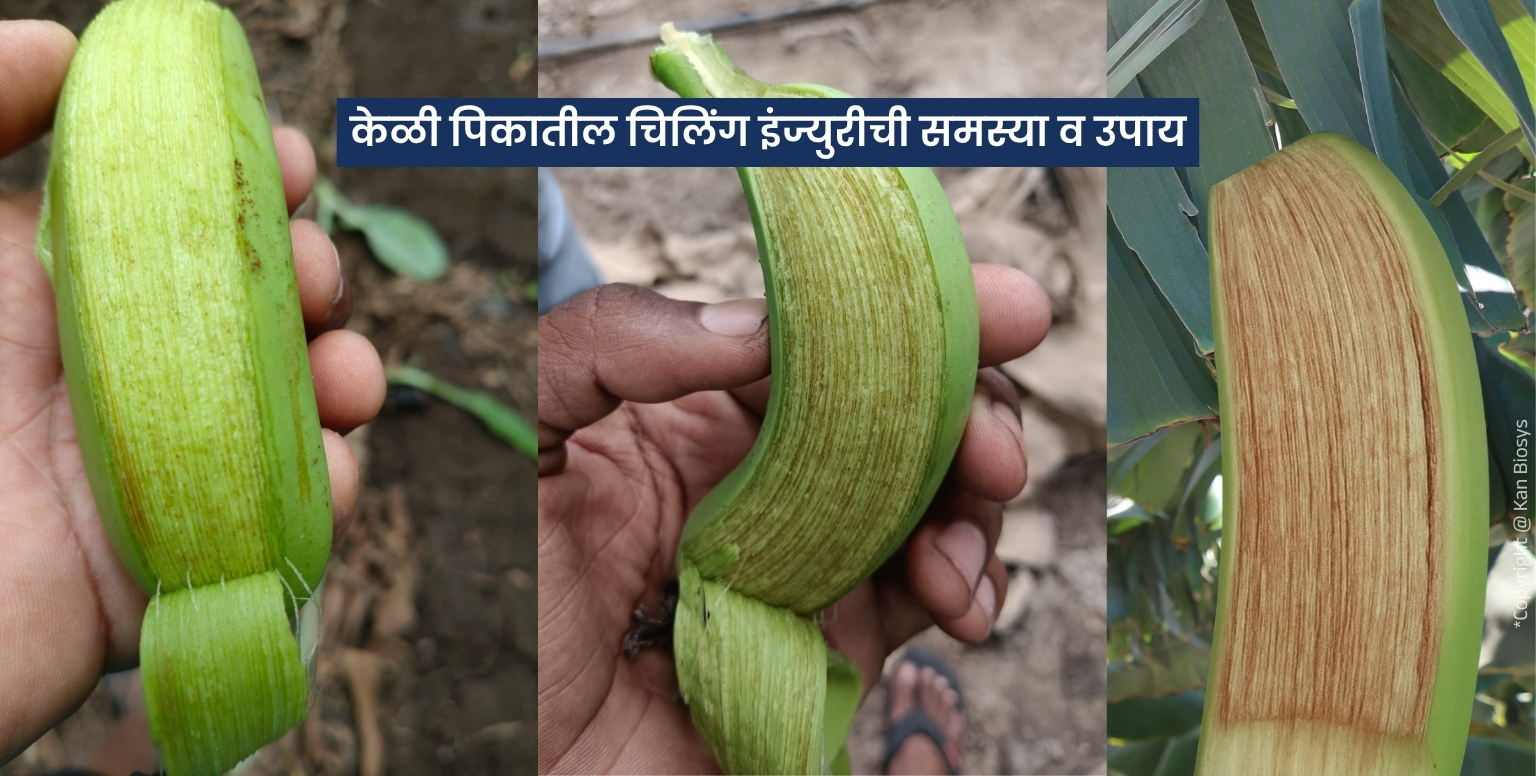Can Bio Fertilizer Be Mixed with Chemical Fertilizer?
Can Bio Fertilizer Be Mixed with Chemical Fertilizer?

The short answer is yes — biofertilizers can be used along with chemical fertilizers, and in many cases, they should be. However, this doesn’t mean simply mixing them in the same bag or tank. The process requires planning, timing, and understanding — an approach widely known as Integrated Nutrient Management (INM). This balanced strategy combines the strengths of both biological and chemical inputs to maximize nutrient efficiency, improve soil health, and ensure long-term sustainability.
Before diving into how bio can be mixed with chemical fertilizer, it’s important to understand what makes these two input types fundamentally different. Chemical fertilizers are inorganic compounds like urea, DAP, or NPK that deliver nutrients in readily available forms, giving plants an immediate boost. They are fast-acting but often short-lived, and their overuse can degrade soil health over time.
Biofertilizers, on the other hand, are living microorganisms — beneficial bacteria and fungi such as Rhizobium, Azospirillum, and Mycorrhiza — that naturally enhance nutrient availability. They don’t feed plants directly but improve soil biology, enabling roots to access nutrients more efficiently. While chemical fertilizers offer speed, biofertilizers provide sustainability.
So when we ask, “Can bio be mixed with chemical fertilizer?”, the real question is how to use both in harmony without compromising their individual benefits. This article will explain exactly how to achieve that — when, and how to apply them together, what precautions to take, and how farmers can get the best of both worlds through science-backed nutrient management.
Read Also: Role of Biofertilizer in Organic Farming: A Sustainable Solution
Understanding Biofertilizers and Chemical (Inorganic) Fertilizers
Before we explore whether biofertilizers can be mixed with chemical fertilizers, it’s essential to understand what makes these two input types distinct — not just in composition, but in how they worktheir mode of action within the soil-plant system.
What Are Chemical Fertilizers?
Chemical fertilizers are synthetic, concentrated salts designed to deliver nutrients directly to plants in their most available form. Common examples include Urea, DAP (Diammonium Phosphate), and NPK granules.
Think of them as an “IV drip” for the plant — they provide immediate, concentrated doses of nutrients like Nitrogen (N), Phosphorus (P), and Potassium (K), giving crops a fast boost in growth and yield. This quick response makes them popular in intensive agriculture systems where rapid nutrient uptake is needed.
However, chemical fertilizers feed the plant directly but not the soil. They do little to improve soil structure, organic matter, or microbial life. When used excessively, they can disrupt soil pH, reduce beneficial microorganisms, and degrade long-term fertility. Over time, this leads to nutrient imbalances and reduced soil resilience, making the land increasingly dependent on chemical inputs for productivity.
What Are Biofertilizers?
In contrast, biofertilizers are living microorganisms — primarily beneficial bacteria and fungi — suspended in a carrier medium such as peat, lignite, or liquid formulations. Common types include Rhizobium, Azotobacter, Phosphate Solubilizing Bacteria (PSB), and Mycorrhizae.
If chemical fertilizers are the plant’s IV drip, biofertilizers are like “probiotics for the soil.” They don’t supply nutrients directly like NPK fertilizers; instead, they unlock and mobilize nutrients already present in the soil or atmosphere.
Their key functions include:
- Fixing atmospheric nitrogen into forms plants can absorb.
- Solubilizing trapped phosphorus and other micronutrients.
- Improving soil structure, carbon sequestration and water-holding capacity.
- Protecting plants from soil-borne pathogens through microbial competition and root colonization.
Most importantly, biofertilizers are alive and sensitive — they require proper storage, moisture, and application conditions to remain effective. They work best in biologically active soils with adequate organic matter and balanced moisture levels.
When managed properly, combining the speed of chemical fertilizers with the sustainability of biofertilizers creates a balanced system — one that optimizes nutrient use efficiency while preserving the living foundation of the soil. That’s the real essence behind the question: can bio be mixed with chemical fertilizer — not blind mixing blindly, but managing both intelligently for long-term soil and crop health.
Understanding Compatibility: Can They Be Mixed?
When discussing whether a biofertilizer can be mixed with a chemical fertilizer, the word “mixing” can mean several things — direct blending, tank mixing, or applying both products in the same field at the same time. Understanding the difference between these is key to using both types of fertilizers effectively and safely.
Most agricultural research institutions, including Tamil Nadu Agricultural University (TNAU), ICAR (Indian Council of Agricultural Research), and several biofertilizer manufacturers, clearly recommend not to mix biofertilizers directly with chemical fertilizers. Here’s why — chemical fertilizers are salts, and when biofertilizers (which contain living microorganisms) come into direct contact with these salts, the high ionic concentration can dehydrate and kill the beneficial microbes.
So, while biofertilizers and chemical fertilizers can be used in the same crop cycle, they should be applied separately, usually with a time gap between applications.
For example:
- Apply the biofertilizer as a seed treatment, root dip, or soil application during planting.
- Apply chemical fertilizers as a top dressing or side placement a few days later.
This ensures that the microbes have already colonized the root zone before coming into contact with high salt concentrations, allowing both products to work efficiently without interfering with each other.
However, there are exceptions. Some modern biofertilizer formulations — particularly those developed with protective carriers or encapsulated microbial technology — are designed to tolerate mild chemical exposure or allow co-application through fertigation systems. In such cases, it’s crucial to follow the manufacturer’s label and technical guidelines.
In short, the answer to whether biofertilizer can be mixed with chemical fertilizer depends on how and when they’re combined. They are compatible in use, but not in direct physical mixing. Applying them strategically — not simultaneously — ensures maximum nutrient efficiency, soil health, and microbial survival.
When Bio + Chemical Inputs Are Used Together (but Separated) – Integrated Nutrient Management
The most effective and scientifically validated answer to can biofertilizer be mixed with chemical fertilizer lies in adopting a system known as Integrated Nutrient Management (INM). This approach combines biofertilizers, organic manures, and chemical fertilizers in a complementary and balanced way — not by physically mixing them, but by using them strategically at different stages of the crop cycle to achieve maximum efficiency and sustainability.
Integrated Nutrient Management recognizes that each input type has its unique role:
- Chemical fertilizers supply nutrients in an immediately available form, giving crops a quick start.
- Organic manures (like compost and farmyard manure) add carbon and organic matter, improving soil structure and water-holding capacity.
- Biofertilizers activate soil biology, making nutrients more available and improving the efficiency of both organic and inorganic fertilizers.
When managed together, these components create a synergistic nutrient cycle. The biofertilizers improve the soil’s microbial activity, which enhances the nutrient uptake of both organic and inorganic inputs — effectively increasing the Nutrient Use Efficiency (NUE) of the entire system.
Research by the Indian Council of Agricultural Research (ICAR) and TNAU (Tamil Nadu Agricultural University) supports this integrated approach. Studies have shown that combining biofertilizers with 50–75% of the recommended dose of chemical fertilizers and organic manure can maintain or even improve yields compared to using 100% chemical fertilizers alone. This means farmers can reduce chemical input costs by 25–50% without compromising productivity, all while improving soil fertility and structure over time.
This integration is especially relevant for India’s diverse farming systems, where soil conditions and resource availability vary widely. By leveraging biofertilizer in organic farming within an INM framework, farmers can sustain productivity, reduce environmental stress, and protect long-term soil health.
In essence, INM proves that the best answer to can biofertilizer be mixed with chemical fertilizer is yes — but intelligently. Used in a planned, phased, and separated manner, biofertilizers and chemical fertilizers together form the foundation of a resilient and future-ready nutrient management strategy.
Benefits of Mixing Biofertilizers and Chemical Fertilizers
When managed properly, the strategic combination of biofertilizer and chemical fertilizers offers the best of both worlds — fast nutrition for plants and lasting fertility for soil. While many farmers still ask, can biofertilizer be mixed with chemical fertilizer, the real question should be: what happens when both are used together intelligently? The answer — better yield, healthier soil, and more sustainable farming.
- Higher Crop Yields with Lower Inputs
Studies by ICAR and state agricultural universities have consistently shown that crops treated with biofertilizers plus 50–75% of the recommended chemical fertilizer dose often yield as much or more than those receiving 100% chemical fertilizers. This is because biofertilizers like Azospirillum and Phosphate Solubilizing Bacteria (PSB) enhance nutrient availability and root efficiency, helping plants absorb every bit of applied fertilizer. For example, trials on rice and wheat demonstrated yield increases of 8–15% under integrated use (ICAR, 2023). - Improved Soil Health and Microbial Activity
While chemical fertilizers supply nutrients directly, biofertilizers build the soil’s living ecosystem. Beneficial microbes improve soil structure, promote humus formation, and increase carbon sequestration (organic carbon levels). This not only enhances root aeration and water retention, but also strengthens soil and gives resilience against drought and prevents nutrient leaching. Over time, farmers notice looser, darker, and more fertile soil — a clear sign of biological recovery. - Enhanced Nutrient Use Efficiency (NUE)
Combining biofertilizers and chemical fertilizers boosts Nutrient Use Efficiency, meaning less nutrient loss to runoff or volatilization. For instance, nitrogen-fixing bacteria help reduce nitrogen wastage, while mycorrhizae extend the effective root zone for better phosphorus and micronutrient uptake. As a result, farmers can apply lower fertilizer doses while maintaining high yields — a crucial advantage in today’s cost-sensitive markets. - Environmental Protection
By cutting chemical dependency, integrated use of biofertilizer in organic farming reduces the risk of groundwater contamination, soil salinity, and greenhouse gas emissions associated with nitrogen fertilizers. Microbial inoculants also enhance carbon sequestration in soils, contributing to climate change mitigation and cleaner ecosystems. - Economic Savings for Farmers
A balanced bio + chemical approach can lower fertilizer expenditure by 25–40% per season, depending on the crop and soil type. Biofertilizers are affordable, multiply naturally in the soil, and reduce the need for repeated chemical applications — translating to better profit margins and sustainable long-term savings.
In summary, the answer to can bio be mixed with chemical fertilizer isn’t just “yes” — it’s “yes, and you’ll gain multiple benefits when done correctly.” This balanced practice enhances yield, preserves soil health, protects the environment, and supports economic viability — forming the backbone of modern sustainable agriculture.
FAQs
1. What is biochemical fertilizer?
A biochemical fertilizer refers to formulations that combine biological components (like beneficial microbes or enzymes), organic matter and with chemical nutrients. They bridge the gap between conventional and organic systems by improving nutrient efficiency and soil health. In practice, this overlaps with the concept of integrated nutrient management — using both biofertilizers and chemical fertilizers intelligently.
2. Can I apply biofertilizer immediately after chemical fertilizer?
No. Most agricultural experts, including ICAR and TNAUState Agricultural Universities, recommend not applying biofertilizer immediately after chemical fertilizer. The salts in chemical fertilizers can harm or kill the beneficial microbes present in biofertilizers. Always maintain a gap of 7–10 days between applications, orapplications or apply them separately — biofertilizers at sowing or transplanting, and chemical fertilizers during later growth stages.
3. Can I reduce chemical fertilizer if I use biofertilizer?
Yes. When used properly, biofertilizers enhance the nutrient use efficiency (NUE) of chemical fertilizers. Research shows that you can often reduce chemical fertilizer doses by 25–50% without lowering yield. This not only saves costs but also improves long-term soil fertility and sustainability.
4. Can Kan Biosys biofertilizers be safely mixed with chemical fertilizers?
Kan Biosys biofertilizers are designed for compatibility with modern nutrient management systems. However, even these advanced products should not be physically mixed with chemical fertilizers unless the label specifically permits co-application. For best results, apply Kan Biosys biofertilizers separately — as seed treatment, soil application, or drip fertigation — following the company’s recommended schedule for each crop.
5. Which types of chemical fertilizers are compatible with biofertilizers?
In general, neutral or low-salt fertilizers (such as ammonium sulfate or single super phosphate) are less harmful to biofertilizers compared to high-salt formulations like urea or DAP. However, the safest approach is to apply them at different times rather than mixing them directly. Always refer to the product-specific compatibility chart provided by the manufacturer.
6. Are there any risks or precautions when mixing biofertilizers and chemical fertilizers?
Yes. The primary risk lies in the salt toxicity of chemical fertilizers, which can reduce the viability of microbial inoculants. To avoid this:
- Do not mix biofertilizers and chemicals in the same tank or bag.
- Maintain a time gap between applications.
- Store biofertilizers in a cool, shaded area, and use them before expiry.
- Ensure adequate soil moisture before application — microbes need a living environment to survive.
7. Are there common misconceptions about combining biofertilizers and chemical fertilizers?
Absolutely. The most common myth is that biofertilizers and chemical fertilizers cannot be used together. In reality, they can and should be combined strategically under Integrated Nutrient Management (INM) — just not mixed directly. Another misconception is that biofertilizers replace chemicals entirely; in fact, they enhance the efficiency of fertilizers while improving soil health.
Conclusion
So, can biofertilizer be mixed with chemical fertilizer? Yes — but only as part of a smart, integrated nutrient management system, not by physically mixing them in a bucket.
When used together correctly, biofertilizers and chemical fertilizers complement each other beautifully. The chemical component provides an instant nutrient boost, while the biofertilizer ensures those nutrients are used efficiently, improving soil biology and long-term fertility. This balanced approach — known as Integrated Nutrient Management (INM) — gives farmers the productivity of modern agriculture with the sustainability of organic practices.
For today’s farmers, especially in India’s evolving agri-landscape, INM isn’t just a recommendation — it’s the future. It allows you to reduce chemical dependence, cut input costs, and revitalize soil health, all while maintaining or even improving yields.
By adopting integrated practices and trusted microbial technologies from innovators like Kan Biosys, you’re not only answering the question “can biofertilizer be mixed with chemical fertilizer” — you’re redefining how modern agriculture can stay productive, profitable, and planet-friendly.
In essence, the smartest mix isn’t in the bag — it’s in the strategy. Use biofertilizers and chemical fertilizers in harmony, and you’ll cultivate not just crops, but a truly sustainable farming future.









